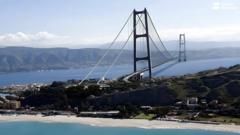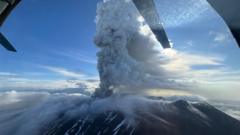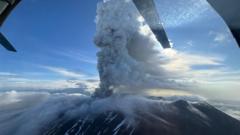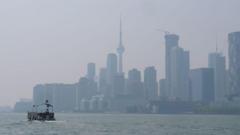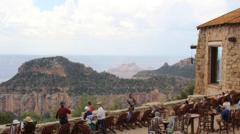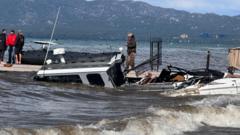Despite the eruption, local air travel remains unaffected, although caution is advised
Mount Etna Erupts Again, Spewing Ash and Smoke
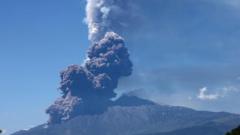
Mount Etna Erupts Again, Spewing Ash and Smoke
Sicilian volcano marks its latest explosive incident with significant ash outflows
Mount Etna, located on the island of Sicily, has erupted once again, releasing massive plumes of ash and smoke into the sky. On Monday morning, images and videos captured from the surrounding areas showed volcanic material cascading down the slopes of the well-known volcano, leading to a fascinating yet concerning sight. According to the Italy's National Institute of Geophysics and Volcanology (INGV) Etna Observatory, the eruption is noted to have involved a series of explosions that increased in intensity throughout the early hours of Monday.
As the eruption continues, the full extent of the volcanic activity remains uncertain, but preliminary reports indicate that disruptions to normal operations, particularly air travel, have been minimal. Airports on the island have reported that flights are operating normally, a sign that the eruption, while serious, has not had a devastating impact so far.
Historically, Mount Etna is known as one of the world’s most active volcanoes, with eruptions being a relatively common occurrence that seldom results in severe injury or damage. Observers noted that the latest activity appears to be stemming from the volcano's southeastern flank, a location near a known vent that measures approximately 200 meters in width. Video footage has shown a swift flow of ash, gas, and rock escaping from the volcano, a phenomenon referred to as a pyroclastic flow. While the presence of such flows presents a danger, currently no immediate threat has been identified.
Geologists monitoring the scene suggest that part of the volcano's crater may have collapsed, releasing additional material down its slopes. The INGV's latest reports indicate that the volcanic material has not progressed beyond the Valley of the Lion, a designated stop for tourists approaching the summit of the mountain.
At around 00:39 local time (22:39 GMT), the INGV first recorded notable changes in the volcano's behavior, later confirming that an ongoing "Strombolian" eruption is taking place. These types of eruptions are characterized by intermittent explosions caused by gas build-up within the magma chamber. As gas bubbles ascend and burst, they can eject material into the air, a process akin to releasing gas from carbonated beverages.
Earlier in the day, a red alert was issued regarding potential risks to aircraft operating in proximity to the eruptions, though this alert was eventually downgraded as conditions continued to stabilize. The last significant eruption of Mount Etna occurred in February, resulting in numerous flight diversions at Catania airport due to ash clouds, prompting authorities to advise tourists to avoid areas with active lava flows.
As the eruption continues, the full extent of the volcanic activity remains uncertain, but preliminary reports indicate that disruptions to normal operations, particularly air travel, have been minimal. Airports on the island have reported that flights are operating normally, a sign that the eruption, while serious, has not had a devastating impact so far.
Historically, Mount Etna is known as one of the world’s most active volcanoes, with eruptions being a relatively common occurrence that seldom results in severe injury or damage. Observers noted that the latest activity appears to be stemming from the volcano's southeastern flank, a location near a known vent that measures approximately 200 meters in width. Video footage has shown a swift flow of ash, gas, and rock escaping from the volcano, a phenomenon referred to as a pyroclastic flow. While the presence of such flows presents a danger, currently no immediate threat has been identified.
Geologists monitoring the scene suggest that part of the volcano's crater may have collapsed, releasing additional material down its slopes. The INGV's latest reports indicate that the volcanic material has not progressed beyond the Valley of the Lion, a designated stop for tourists approaching the summit of the mountain.
At around 00:39 local time (22:39 GMT), the INGV first recorded notable changes in the volcano's behavior, later confirming that an ongoing "Strombolian" eruption is taking place. These types of eruptions are characterized by intermittent explosions caused by gas build-up within the magma chamber. As gas bubbles ascend and burst, they can eject material into the air, a process akin to releasing gas from carbonated beverages.
Earlier in the day, a red alert was issued regarding potential risks to aircraft operating in proximity to the eruptions, though this alert was eventually downgraded as conditions continued to stabilize. The last significant eruption of Mount Etna occurred in February, resulting in numerous flight diversions at Catania airport due to ash clouds, prompting authorities to advise tourists to avoid areas with active lava flows.


